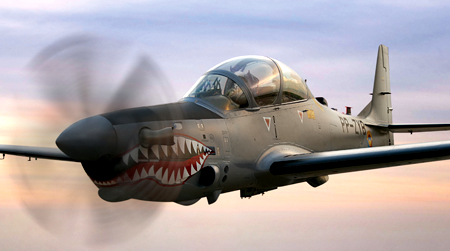INDIAN ARMED FORCES CHIEFS ON OUR RELENTLESS AND FOCUSED PUBLISHING EFFORTS

SP Guide Publications puts forth a well compiled articulation of issues, pursuits and accomplishments of the Indian Army, over the years

"Over the past 60 years, the growth of SP Guide Publications has mirrored the rising stature of Indian Navy. Its well-researched and informative magazines on Defence and Aerospace sector have served to shape an educated opinion of our military personnel, policy makers and the public alike. I wish SP's Publication team continued success, fair winds and following seas in all future endeavour!"

Since, its inception in 1964, SP Guide Publications has consistently demonstrated commitment to high-quality journalism in the aerospace and defence sectors, earning a well-deserved reputation as Asia's largest media house in this domain. I wish SP Guide Publications continued success in its pursuit of excellence.
OEM - Hearty Embraer

The Brazilian aerospace major has correctly embraced market segments with high growth potential in commercial, military and business aviation, reports Air Marshal (Retd) B.K. Pandey following a tour of the company’s manufacturing hubs in Brazil from November 6 to 8.
Empresa brasileira de aeronautica—Or embraer, the Brazilian aerospace major—embodies vision, perseverance, courage and passion. Battling every impediment with indomitable spirit and determination in its relatively brief existence spanning four decades, Embraer today reckons among the leading manufacturers of aircraft in the world. In the regime of commercial airliners, Embraer ranks number three, after Airbus and Boeing.
Embraer was founded in 1969 as a public sector company. Privatised in 1994, the government continues to hold a mere 0.3 per cent of stake and has very little say over the affairs of the company. Over the years, Embraer has achieved a remarkable level of development that has been possible through the right corporate strategy and business model. The company has correctly identified market segments with high growth potential in commercial, military and business aviation. It has adopted a collaborative approach targeting sources of the most advanced technology in the world and scrupulously avoided rediscovering the wheel. The growth strategy of the company was engineered and its destiny steered by private enterprise without the restraining and often debilitating influence of government control. It has three divisions, each dealing with its own distinct market segment:
• Commercial Aviation
• Business Aviation
• Defence
Commercial Aviation
Notable in Embraer’s perspective of Commercial Aviation is its decision to confine production of airliners to the regional category by international norms but with extended range to compete with regular non-regional airliners. This concept is based perhaps on the premise that it would be easier to fill seats in a regional-size airliner than a wide body jet, providing for better yield and profitability—a philosophy corroborated by the experience of airlines operating the Embraer family of airliners. Not surprisingly, Embraer did not venture into the segments where there would be fierce competition from Airbus and Boeing.
In the Commercial Aviation segment, Embraer has nine models of varying sizes ranging from the 30-seat EMB 120, pressurised twin-turboprop featuring high cruise speed to the 122-seat EMB 195 with a range of 2,200 nm. All these versions have low operating cost and are eminently suitable for budget carriers. The models in between are designated as Embraer Regional Jet, namely the ERJ 135, 140, 145 and the 145 XR. Beyond this, Embraer shed the prefix Regional Jet and designated the larger models as EMB 170, 175, 190 and 195. So far close to 1,100 aircraft of this family has been delivered across the world.
Business Aviation
In the Business Aviation segment, the various sizes of Embraer jets are classified into three groups: the Phenom, Legacy and Lineage. Phenom Business Jets: Embraer offers two types of business jets for short range travel, the Phenom 100 Very Light Jet and the Phenom 300 Light Jet. Fitted with G1000 avionics, Phenom 100 is designed for singlepilot operation and to carry five other occupants at a maximum cruise speed of 370 knots over 1,160 nm in, as claimed by the manufacturer, supreme comfort. The Phenom 300 can accommodate up to nine occupants, has a cruise speed of 450 knots and can climb to 45,000 ft to beat both turbulence and traffic. It has a range of 1,800 nm with six occupants and, in this respect, is on top of its class. While certification is yet to be obtained, so far orders have been booked for over 830 Phenom jets, a clear manifestation in the global market of the level of confidence and acceptance of the price tag.





